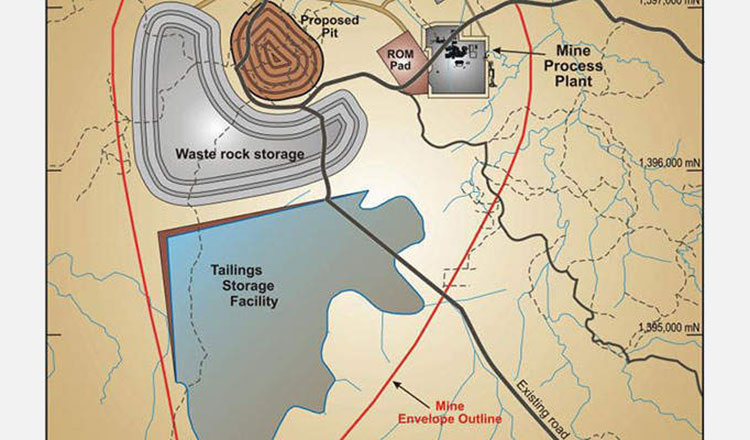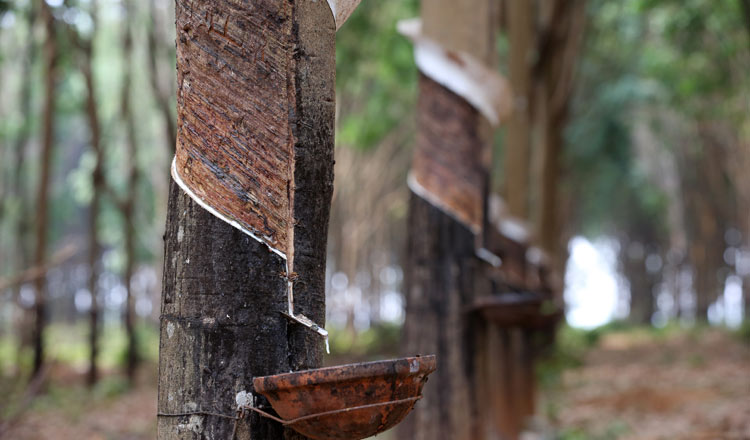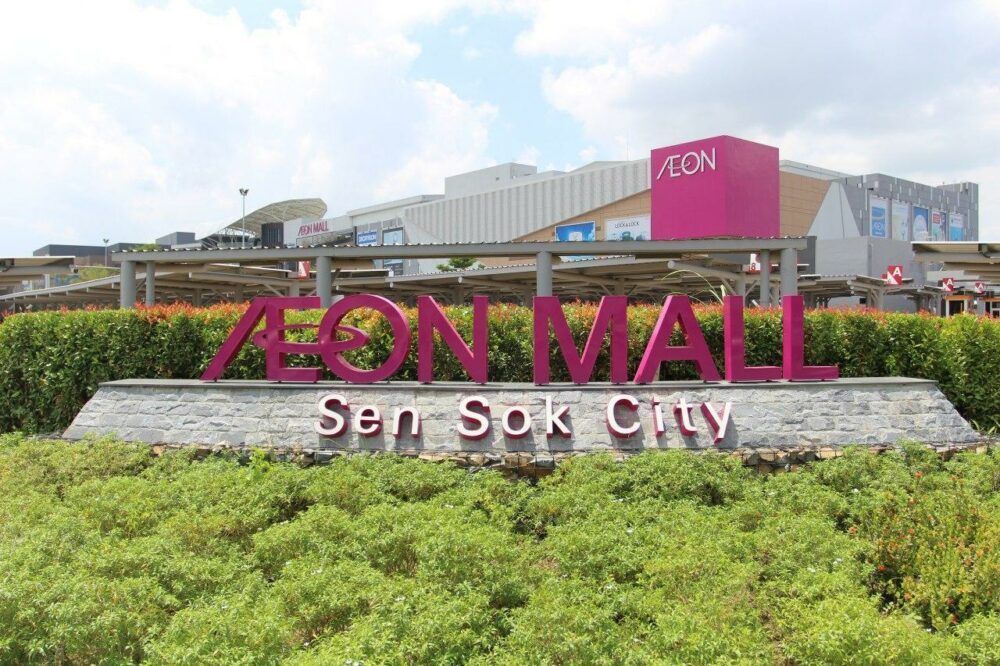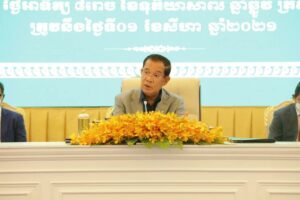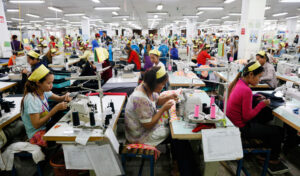Renaissance refines 800 kilograms of gold in five months
Renaissance Minerals (Cambodia) Limited has semi-refined around 800 kilograms of gold ore from its mine at Okvau in Mondulkiri province’s Keo Seima district.
The figures were revealed by Prime Minister Hun Sen during a televised speech on Monday.
Renaissance is owned by Australia’s Emerald Resources. The prime minister said production in Cambodia is likely to increase, helped by the strong relationship between the two countries’ governments.
“The cooperation between Cambodia and Australia, especially in the gold mining sector and particularly the Renaissance gold refining company, has reached almost one tonne [1,000 kg] and will continue to increase,” Mr Hun Sen said.
His comments came as Australia’s Foreign Affairs Minister Marise Payne arrived in Cambodia for an official visit.
Renaissance started production in June this year, producing the Kingdom’s first semi-finished gold dore bars of around 90 percent purity, becoming the first commercial gold miner in the Kingdom.
It plans to refine an estimated three tonnes of gold ore every year for the first eight years of the mine’s operation, which is about 250 kg per month.
The company exports the gold ore to Australia for further refining to reach the 99.99 percent purity required for sale on the international market,
“In the period of a few-months, we extracted about 800 kg of gold ore, starting from June. So, in a year, extraction of gold ore will increase significantly,” the premier said, adding that the company is exploring for gold in other parts of the Kingdom.
As of October, the firm had exported more than 500 kg of gold ore, according to Eung Dipola, Director General of Mines at the Ministry of Mines and Energy.
The company has been recently granted a new mine exploration license on 107 hectares of land located in Tboung Khmum province’s Memot district. The license provides the company three years for exploration from January 2021 to January 2024.
Renaissance has started demarcation of the area and is working with local authorities to explain the benefits of the project to the local people, Dipola said. The company also needs to evict illegal miners, occupying part of the site.
Dipola said the extent of the mine underground cannot yet be estimated because the company is in still in the exploration stage.
In a presentation to the Australian Stock Exchange this month Emerald Resources said exploratory drilling at Memot was about to begin and it had also ramped up gold exploration around the Okvau mine. It said it sees potential at the Preak Klong and Oktung Projects just south of Okvau, covering 392 square kilometres.
According to Mining Technology, the Okvau Gold Project involves the development of the Okvau Deposit, which is located in the Mondulkiri province of eastern Cambodia, approximately 275km north-east of the capital city, Phnom Penh.
The project is wholly-owned by Renaissance Minerals through its subsidiary Renaissance Minerals (Cambodia). The project was acquired from OZ Minerals in February 2012.
The project scoping study was completed in October 2014, while the pre-feasibility study (PFS) was completed in July 2015. The pre-production capital cost for the project is estimated to be $120m.
The project aims to recover 100,000oz gold a year during the estimated initial eight-year mine life, with a targeted average production rate of 91,500oz a year, integrating a 1.5 million tonne a year (Mt/y) throughput processing plant.
The Okvau deposit, interpreted as an intrusive-related gold system, is hosted primarily in Cretaceous-age diorite, surrounding Triassic meta-sedimentary host rock to a lesser extent, with the highest grade intersections generally occurring at the diorite meta-sediments contact. The mineralised vein system of the deposit has a current strike extent of 500m, across a width of 400m.
As of July 2015, the project is estimated to hold a combined indicated and inferred resource of 15.8Mt, containing 1.13 million ounces (Moz) of gold.
The development of the open-pit in phases is expected to reduce waste stripping in the initial years, which will lead to a reduced mining cost. The first two stages combined will account for approximately 70% of the mine’s overall mill feed, which is equivalent to the overall mill feed required for the initial five years of operation. Khmer Times

